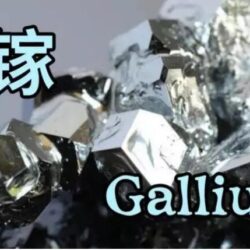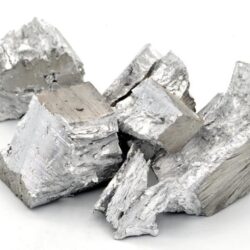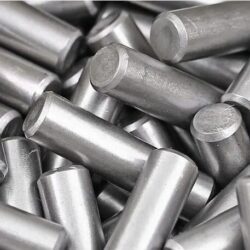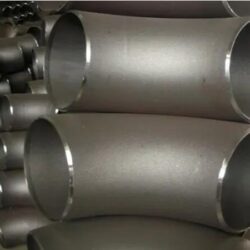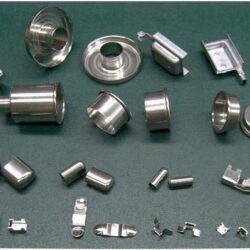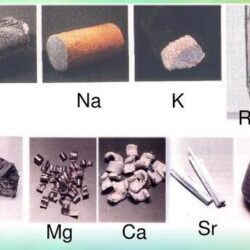Aluminium (aluminum in American and Canadian English) is a chemical element with the symbol Al and atomic number 13. Aluminium has a density lower than those of other common metals, at approximately one third that of steel. It has a great affinity towards oxygen, and forms a protective layer of oxide on the surface when exposed to air. Aluminium visually resembles silver, both in its color and in its great ability to reflect light. It is soft, non-magnetic and ductile. It has one stable isotope, 27Al; this isotope is very common, making aluminium the twelfth most common element in the Universe. The radioactivity of 26Al is used in radiodating.

Chemically, aluminium is a weak metal in the boron group; as it is common for the group, aluminium forms compounds primarily in the +3 oxidation state. The aluminium cation Al3+ is small and highly charged; as such, it is polarizing, and bonds aluminium forms tend towards covalency. The strong affinity towards oxygen leads to aluminium’s common association with oxygen in nature in the form of oxides; for this reason, aluminium is found on Earth primarily in rocks in the crust, where it is the third most abundant element after oxygen and silicon, rather than in the mantle, and virtually never as the free metal.
Fact box
| Group | 13 | Melting point | 660.323°C, 1220.581°F, 933.473 K |
| Period | 3 | Boiling point | 2519°C, 4566°F, 2792 K |
| Block | p | Density (g cm−3) | 2.70 |
| Atomic number | 13 | Relative atomic mass | 26.982 |
| State at 20°C | Solid | Key isotopes | 27Al |
| Electron configuration | [Ne] 3s23p1 | CAS number | 7429-90-5 |
| ChemSpider ID | 4514248 | ChemSpider is a free chemical structure database |
Physical characteristics
Isotopes of aluminium
Of aluminium isotopes, only 27Al is stable. This situation is common for elements with an odd atomic number.[b] It is the only primordial aluminium isotope, i.e. the only one that has existed on Earth in its current form since the formation of the planet. Nearly all aluminium on Earth is present as this isotope, which makes it a mononuclidic element and means that its standard atomic weight is virtually the same as that of the isotope. This makes aluminium very useful in nuclear magnetic resonance (NMR), as its single stable isotope has a high NMR sensitivity. The standard atomic weight of aluminium is low in comparison with many other metals,[c] which has consequences for the element’s properties (see below).
Electron shell
An aluminium atom has 13 electrons, arranged in an electron configuration of [Ne] 3s2 3p1, with three electrons beyond a stable noble gas configuration. Accordingly, the combined first three ionization energies of aluminium are far lower than the fourth ionization energy alone.Such an electron configuration is shared with the other well-characterized members of its group, boron, gallium, indium, and thallium; it is also expected for nihonium. Aluminium can relatively easily surrender its three outermost electrons in many chemical reactions (see below). The electronegativity of aluminium is 1.61 (Pauling scale).
Bulk
Aluminium metal has an appearance ranging from silvery white to dull gray, depending on the surface roughness.[d] A fresh film of aluminium serves as a good reflector (approximately 92%) of visible light and an excellent reflector (as much as 98%) of medium and far infrared radiation.[citation needed] Aluminium mirrors are the most reflective of all metal mirrors for the near ultraviolet and far infrared light, and one of the most reflective in the visible spectrum, nearly on par with silver, and the two therefore look similar. Aluminium is also good at reflecting solar radiation, although prolonged exposure to sunlight in air add wear to the surface of the metal; this may be prevented if aluminium is anodized, which adds a protective layer of oxide on the surface.[citation needed]
Chemistry
Aluminium combines characteristics of pre- and post-transition metals. Since it has few available electrons for metallic bonding, like its heavier group 13 congeners, it has the characteristic physical properties of a post-transition metal, with longer-than-expected interatomic distances.Furthermore, as Al3+ is a small and highly charged cation, it is strongly polarizing and bonding in aluminium compounds tends towards covalency; this behavior is similar to that of beryllium (Be2+), and the two display an example of a diagonal relationship.
The underlying core under aluminium’s valence shell is that of the preceding noble gas, whereas those of its heavier congeners gallium, indium, thallium, and nihonium also include a filled d-subshell and in some cases a filled f-subshell. Hence, the inner electrons of aluminium shield the valence electrons almost completely, unlike those of aluminium’s heavier congeners. As such, aluminium is the most electropositive metal in its group, and its hydroxide is in fact more basic than that of gallium.[29][e] Aluminium also bears minor similarities to the metalloid boron in the same group: AlX3 compounds are valence isoelectronic to BX3 compounds (they have the same valence electronic structure), and both behave as Lewis acids and readily form adducts.[31] Additionally, one of the main motifs of boron chemistry is regular icosahedral structures, and aluminium forms an important part of many icosahedral quasicrystal alloys, including the Al–Zn–Mg class.
Aluminium has a high chemical affinity to oxygen, which renders it suitable for use as a reducing agent in the thermite reaction. A fine powder of aluminium metal reacts explosively on contact with liquid oxygen; under normal conditions, however, aluminium forms a thin oxide layer (~5 nm at room temperature) that protects the metal from further corrosion by oxygen, water, or dilute acid, a process termed passivation.Because of its general resistance to corrosion, aluminium is one of the few metals that retains silvery reflectance in finely powdered form, making it an important component of silver-colored paints.Aluminium is not attacked by oxidizing acids because of its passivation. This allows aluminium to be used to store reagents such as nitric acid, concentrated sulfuric acid, and some organic acids.
In hot concentrated hydrochloric acid, aluminium reacts with water with evolution of hydrogen, and in aqueous sodium hydroxide or potassium hydroxide at room temperature to form aluminates—protective passivation under these conditions is negligible.Aqua regia also dissolves aluminium. Aluminium is corroded by dissolved chlorides, such as common sodium chloride, which is why household plumbing is never made from aluminium.The oxide layer on aluminium is also destroyed by contact with mercury due to amalgamation or with salts of some electropositive metals.As such, the strongest aluminium alloys are less corrosion-resistant due to galvanic reactions with alloyed copper, and aluminium’s corrosion resistance is greatly reduced by aqueous salts, particularly in the presence of dissimilar metals.
Aluminium reacts with most nonmetals upon heating, forming compounds such as aluminium nitride (AlN), aluminium sulfide (Al2S3), and the aluminium halides (AlX3). It also forms a wide range of intermetallic compounds involving metals from every group on the periodic table.
History
The analysis of a curious metal ornament found in the tomb of Chou-Chu, a military leader in 3rd century China, turned out to be 85% aluminium. How it was produced remains a mystery. By the end of the 1700s, aluminium oxide was known to contain a metal, but it defeated all attempts to extract it. Humphry Davy had used electric current to extract sodium and potassium from their so-called ‘earths’ (oxides), but his method did not release aluminium in the same way. The first person to produce it was Hans Christian Oersted at Copenhagen, Denmark, in 1825, and he did it by heating aluminium chloride with potassium. Even so, his sample was impure. It fell to the German chemist Friedrich Wöhler to perfect the method in 1827, and obtain pure aluminium for the first time by using sodium instead of potassium.
The discovery of aluminium was announced in 1825 by Danish physicist Hans Christian Ørsted. The first industrial production of aluminium was initiated by French chemist Henri Étienne Sainte-Claire Deville in 1856. Aluminium became much more available to the public with the Hall–Héroult process developed independently by French engineer Paul Héroult and American engineer Charles Martin Hall in 1886, and the mass production of aluminium led to its extensive use in industry and everyday life. In World Wars I and II, aluminium was a crucial strategic resource for aviation. In 1954, aluminium became the most produced non-ferrous metal, surpassing copper. In the 21st century, most aluminium was consumed in transportation, engineering, construction, and packaging in the United States, Western Europe, and Japan.
Applications
Metal
The global production of aluminium in 2016 was 58.8 million metric tons. It exceeded that of any other metal except iron (1,231 million metric tons).
Aluminium is almost always alloyed, which markedly improves its mechanical properties, especially when tempered. For example, the common aluminium foils and beverage cans are alloys of 92% to 99% aluminium.The main alloying agents are copper, zinc, magnesium, manganese, and silicon (e.g., duralumin) with the levels of other metals in a few percent by weight.Aluminum, both wrought and cast, has been alloyed with: manganese, silicon, magnesium, copper and zinc amongst others. For example, the Kynal family of alloys was developed by the British chemical manufacturer Imperial Chemical Industries.
The major uses for aluminium metal are in:
- Transportation (automobiles, aircraft, trucks, railway cars, marine vessels, bicycles, spacecraft, etc.). Aluminium is used because of its low density;
- Packaging (cans, foil, frame etc.). Aluminium is used because it is non-toxic (see below), non-adsorptive, and splinter-proof;
- Building and construction (windows, doors, siding, building wire, sheathing, roofing, etc.). Since steel is cheaper, aluminium is used when lightness, corrosion resistance, or engineering features are important;
- Electricity-related uses (conductor alloys, motors, and generators, transformers, capacitors, etc.). Aluminium is used because it is relatively cheap, highly conductive, has adequate mechanical strength and low density, and resists corrosion;
- A wide range of household items, from cooking utensils to furniture. Low density, good appearance, ease of fabrication, and durability are the key factors of aluminium usage;
- Machinery and equipment (processing equipment, pipes, tools). Aluminium is used because of its corrosion resistance, non-pyrophoricity, and mechanical strength.
- Portable computer cases. Currently rarely used without alloying,[142] but aluminum can be recycled and clean aluminum has residual market value: for example, the Used Beverage Can (UBC) material was used to encase the electronic components of MacBook Air laptop, Pixel 5 smartphone or Summit Lite smartwatch.
Compounds
The great majority (about 90%) of aluminium oxide is converted to metallic aluminium.[129] Being a very hard material (Mohs hardness 9),[146] alumina is widely used as an abrasive;[147] being extraordinarily chemically inert, it is useful in highly reactive environments such as high pressure sodium lamps.[148] Aluminium oxide is commonly used as a catalyst for industrial processes;[129] e.g. the Claus process to convert hydrogen sulfide to sulfur in refineries and to alkylate amines. Many industrial catalysts are supported by alumina, meaning that the expensive catalyst material is dispersed over a surface of the inert alumina.Another principal use is as a drying agent or absorbent.
Laser deposition of alumina on a substrate
Several sulfates of aluminium have industrial and commercial application. Aluminium sulfate (in its hydrate form) is produced on the annual scale of several millions of metric tons. About two-thirds is consumed in water treatment.[153] The next major application is in the manufacture of paper. It is also used as a mordant in dyeing, in pickling seeds, deodorizing of mineral oils, in leather tanning, and in production of other aluminium compounds.[153] Two kinds of alum, ammonium alum and potassium alum, were formerly used as mordants and in leather tanning, but their use has significantly declined following availability of high-purity aluminium sulfate.[153] Anhydrous aluminium chloride is used as a catalyst in chemical and petrochemical industries, the dyeing industry, and in synthesis of various inorganic and organic compounds. Aluminium hydroxychlorides are used in purifying water, in the paper industry, and as antiperspirants. Sodium aluminate is used in treating water and as an accelerator of solidification of cement.
Many aluminium compounds have niche applications, for example:
- Aluminium acetate in solution is used as an astringent.
- Aluminium phosphate is used in the manufacture of glass, ceramic, pulp and paper products, cosmetics, paints, varnishes, and in dental cement.
- Aluminium hydroxide is used as an antacid, and mordant; it is used also in water purification, the manufacture of glass and ceramics, and in the waterproofing of fabrics.
- Lithium aluminium hydride is a powerful reducing agent used in organic chemistry.
- Organoaluminiums are used as Lewis acids and cocatalysts.[
- Methylaluminoxane is a cocatalyst for Ziegler–Natta olefin polymerization to produce vinyl polymers such as polyethene.[
- Aqueous aluminium ions (such as aqueous aluminium sulfate) are used to treat against fish parasites such as Gyrodactylus salaris.
- In many vaccines, certain aluminium salts serve as an immune adjuvant (immune response booster) to allow the protein in the vaccine to achieve sufficient potency as an immune stimulant.
